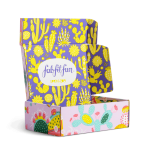In the world of dining and hospitality, first impressions begin long before the first bite. The moment a beautifully packaged tableware set arrives at a customer’s doorstep or gets unveiled in a restaurant supply room, an unspoken promise of quality is made. Tableware packaging boxes are no longer mere containers—they’ve evolved into powerful brand ambassadors, protective guardians, and sustainable statements that reflect the values of both manufacturer and consumer.
The modern tableware packaging box serves multiple crucial functions that extend far beyond basic transportation. These carefully engineered containers must protect delicate porcelain, fragile glassware, and precision-cutlery from the perils of shipping and handling. But protection is just the beginning. Today’s discerning customers expect packaging that tells a story, enhances the unboxing experience, and aligns with their environmental consciousness. The rustle of tissue paper, the smooth glide of a magnetic closure, the subtle embossing of a logo—these sensory details transform a simple transaction into a memorable ritual.
Innovation in tableware packaging materials has become increasingly sophisticated. From molded pulp inserts that cradle each piece like a precious artifact to anti-tarnish treated compartments that preserve silverware’s brilliance, manufacturers are leveraging advanced materials science to ensure products arrive in pristine condition. The rise of eco-friendly alternatives—recycled cardboard, biodegradable foam substitutes, and plant-based inks—demonstrates how the industry is responding to growing environmental concerns without compromising on protection or aesthetics.
Brand differentiation through packaging design has never been more critical in the competitive tableware market. A well-designed packaging box communicates quality before the contents are even revealed. Luxury brands often employ minimalist designs with subtle metallic accents, while artisanal producers might opt for rustic textures and handmade paper elements. The interior layout—whether featuring individual slots for each piece or artistic arrangements that showcase the complete set—contributes significantly to the perceived value and desirability of the tableware collection.
The unboxing experience has emerged as a crucial touchpoint in customer journey mapping. Social media platforms are filled with videos of people unwrapping their new tableware purchases, making the packaging itself part of the product’s shareable appeal. Brands that understand this phenomenon design their tableware packaging boxes with ‘Instagrammable’ moments in mind—perhaps a reveal layer that slowly displays the complete set or hidden compartments that surprise and delight. This attention to theatrical presentation turns customers into brand advocates who willingly share their positive experiences with global audiences.
From a retail perspective, tableware packaging boxes serve as silent salespeople on shelves. Their exterior must convey essential information while maintaining visual appeal. Clear product imagery, material specifications, care instructions, and brand story elements must be strategically incorporated without creating visual clutter. The box’s structural integrity ensures it remains presentable throughout the retail journey, resisting the wear and tear of handling while protecting the valuable contents within.
Sustainability has transitioned from a niche concern to a mainstream expectation in tableware packaging. Consumers increasingly seek brands that demonstrate environmental responsibility through their packaging choices. This has spurred innovations in reusable packaging designs—boxes that transform into display cases, or packaging components that can be repurposed as home organization solutions. The circular economy concept is gaining traction, with some manufacturers implementing take-back programs for their packaging materials.
The functional aspects of tableware packaging extend beyond the initial purchase. Well-designed boxes often serve as storage solutions for seasonal items or special occasion pieces. Features like sturdy handles for easy transportation, secure closure mechanisms for stackable storage, and moisture-resistant barriers for long-term protection add practical value that customers appreciate long after the unboxing moment has passed.
Looking toward the future, smart packaging technologies are beginning to influence the tableware sector. QR codes that link to product registration, care tutorials, or complementary items; NFC chips that enable authentication and brand storytelling; temperature-sensitive inks that indicate improper storage conditions—these innovations are gradually transforming passive boxes into interactive brand touchpoints that deepen customer engagement and provide valuable usage data to manufacturers.
In conclusion, the humble tableware packaging box has undergone a remarkable transformation from simple container to multidimensional brand asset. It simultaneously protects precious contents, communicates brand values, delights customers, supports sustainability initiatives, and extends product functionality. As the boundaries between product and packaging continue to blur, investing in thoughtful tableware packaging design becomes not just a logistical necessity but a strategic opportunity to create lasting impressions and build brand loyalty that lasts long after the box is opened.




Leave a Message